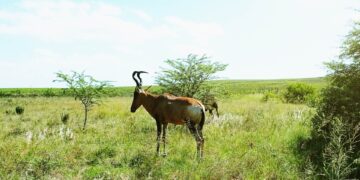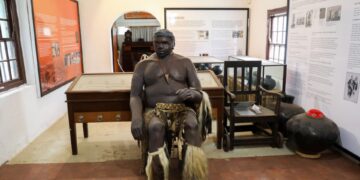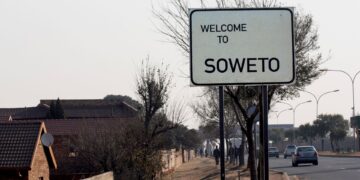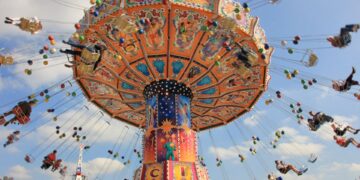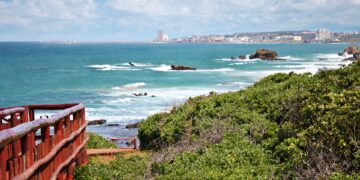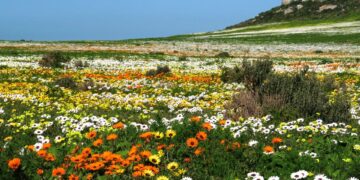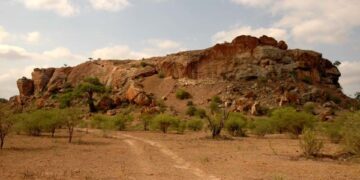Immerse yourself into the energy, culture, adventure and history experiencing all Gauteng has to offer. From the magnetism of the cities to natural beauty, rich historical sites and great human conversations, you can find it all in Gauteng.
Magaliesberg Mountains
Why you should visit: The Magaliesberg Mountains (not to be confused with Magaliesburg town 8km away), stretch for 120km from Tshwane (Pretoria city and surrounds) into Limpopo. The mountains, one of the oldest mountain ranges on earth, are an ideal weekend getaway from the buzz of the city. Birdwatchers can spot up to 300 species of bird. Visit the Rustenburg and Silkaatsnek nature reserves to see sable antelope, which have been reintroduced to the region. Many fit Gautengers come here to hike, trail run and mountain bike. Continue south into Limpopo to find more adventure at the Hartbeespoort Dam.
How to get there: It’s a one-hour drive from Johannesburg and Pretoria.
Suikerbosrand Nature Reserve
Why you should visit: Snuggled in the south of Gauteng, is the Suikerbosrand Nature Reserve, a hiker’s paradise with well-marked day trails of 4km, 10km and 12km and backpacking trails of 66km. There are well-equipped overnight huts and facilities for those embarking on those longer hikes. You can spend up to six days hiking through the reserve. Hike (or run the trails) and keep your eyes peeled for zebra, black wildebeest, hyena and more.
How to get there: It’s less than an hour’s drive from Johannesburg, close to Heidelberg.
Jacaranda City
Why you should visit: The best time to visit Pretoria or Jacaranda City, as it’s affectionately called, is during the spring months of late September to mid-November. Mid-October is regarded as prime time to see the city’s streets and parks coloured bright purple from the over 70 000 flowering Jacaranda trees.
How to get there: For the best birds-eye view, take a drive up into the Klapperkop Nature Reserve (entrance is free) accessed from Johann Rissik Drive. There are great viewpoints overlooking the city. Try spotting the hundred rare white Jacaranda trees that flower on Herbert Baker Street, too. Walking around, find some of the oldest Jacarandas on Bosman and Cilliers streets.
Cradle of Humankind
Why you should visit: You don’t have to be a paleo-anthropologist to enjoy the UNESCO World Heritage site, known as the Cradle of Humankind. The whole family can go back to where it all began at Maropeng, Gauteng, the official visitors centre. Join a self-guided tour to view four million-year-old hominid and dinosaur fossils, as well as, ancient artefacts and then take the guided tour into the Sterkfontein Caves.
How to get there: It’s an hour’s drive from Johannesburg and Pretoria. Visit Maropeng and then drive 10km down the road to the Sterkfontein Caves.
How much does it cost: Adults can buy a combination ticket for Maropeng and the caves for R190.
Hop on Hop off city sightseeing bus
Why you should visit: Johannesburg’s iconic red double-decker open-top Hop on, Hop off sightseeing bus is the best way to get an overview of the city. The network visits all the notable historic sights. With over 16 stops in the city and Soweto, you can visit 20 must-see attractions such as Gold Reef City, Zoo Lake, SAB World of Beer, Constitution Hill and the many museums.
We highly recommend you spend some time at the apartheid museum. The in-depth exhibition brings the turbulent past of the country to life and it’s a must-do for every local and international visitor. Buy a two-day bus pass so you can spend an entire day at Gold Reef City, whisking you back to the city’s gold rush past. The amusement park is situated on an old gold mine and the non-claustrophobic (and those not scared of the dark) can join the only authentic underground mine tour, descending 226 meters into the bowels of the earth, for a glimpse into the world of a gold miner.
How much does it cost: A one-day adult ticket is R149.
How to get there: Visit www.citysightseeing.co.za for all the bus pick-up points.
Soweto
Why you should visit: Soweto lies southwest of Johannesburg and is home to more than 1.3 million South Africans. It is on the streets of Soweto that our country’s freedom was born. Support a local tour, which will take you to places such as the former home of Nelson Mandela and Desmond Tutu. See where the Freedom Charter was signed, the Hector Pieterson Memorial and more. There’s no other way to better understand township culture than by asking a local to show you their world. Afterwards, relax with a beer and watch the soccer at one of the taverns.
Adrenaline junkies should swing by the Orlando Towers to jump off the world’s first bungee jump between two cooling towers, at the site of an old coal-fired power station. The towers are now brightly coloured, depicting township life and are Soweto’s most iconic buildings. The centre for adventures also offers abseiling, zip-lining and more.
How to get there: Find Orlando Towers at Dynamo Street, Corner of Chris Hani Road, Orlando East, Soweto, Gauteng.
Soweto Derby
Why you should visit: You haven’t experienced the spirit of South Africa until you witness the colour and chaos of a local soccer (football) game. The Soweto Derby at Joburg’s Soccer City is the match to see! The annual event sees Orlando Pirates and Kaiser Chiefs battle it out for the fiercely contested title. The atmosphere is unbeatable, even if you have no interest in soccer.
How much does it cost: Book extremely early. Buy tickets at Computicket and from Shoprite/Checkers stores. Tickets priced from R100 upwards.
How to get there: Find Soccer City, also known as the FNB Stadium, at Soccer City Avenue, Nasrec.





